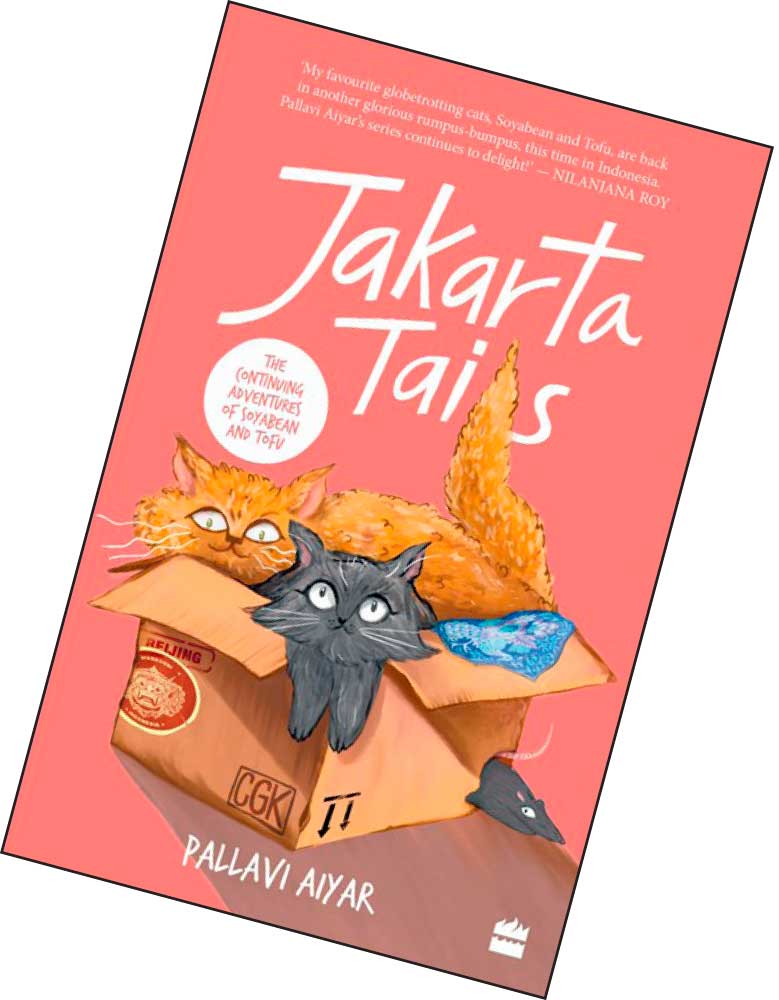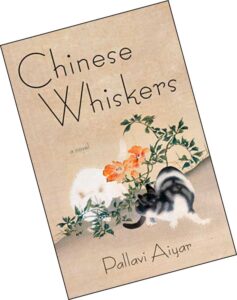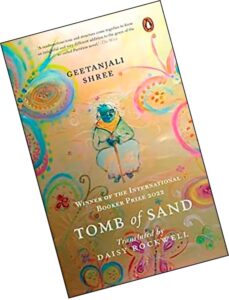

Yes, Tomb of Sand is utterly, butterly original, all 700-odd pages of it. It’s no wonder that Geetanjali Shree, whose novel has won the International Booker Prize this year, has infused the Indian literary scene with new energy. This is the first time that a novel originally written in Hindi (Ret Samadhi) and translated into English, has won international recognition on such a prestigious scale. Actually, any Indian language, save English. Of course, the credit goes equally to the translator, Daisy Rockwell, and both author and translator share the award and the prize money.
There has been some confusion because of the word ‘Booker’. To clarify: There is something called the Booker Prize, the top literary honour in the UK. Earlier open only to writers from the UK and erstwhile British colonies, the field was opened up in 2014 to include authors worldwide, so long as the work is in English and is published in the UK. Indian authors (or authors of Indian origin) who have won this Booker are V S Naipaul, Salman Rushdie, Arundhati Roy, Kiran Desai and Arvind Adiga. On the other hand, the International Booker, which is what Tomb of Sand has won, is awarded to a writer of any nationality for a book in English or translation into English. Recent winners include David Diop, Marieke Lucas Rijneveld, Jokha al-Harthi, Olga Tokarczuk, David Grossman and Han Kang. Stirring this pot for a few years was the Man Booker Prize, sponsored by the Man Group of companies.
At this point, a confession: If Tomb of Sand had not won international recognition, I might not have even heard of the book, let alone read it and that would have been entirely my loss.
What is this literary sensation that has got everybody all excited? For one, it belies its appearance. Despite being hefty along the lines of a War and Peace or Ulysses, Tomb of Sand has none of the darkness or density of the two classics, either in form or content. Geetanjali Shree has offered us a book that’s light, peppy, irreverent, a novel that is and does its own thing. Completely original. I have read some 500 pages so far, and it hasn’t worn me down. My arms ache so I can read only a few pages at a time, but my mind is set afloat, my brain dances, my eyes sparkle and sometimes I laugh out loud. The writing is bold, unique, almost stream-of-conscious, and the wordplay delightful. There is a plethora of references to people, places, events that trigger memories; the reader has no choice but to stop and reflect, even if you don’t quite get what’s going on.
Yet, it moves inexorably forward in the most peculiar manner, playing with words and meanings and contemporary references. You feel the author is not just telling her story in a fantastical manner, she’s actually having fun in the process. Generally, you think of good writing as crafted very carefully, every word and sentence and thought put there in a certain way for a certain reason. Tomb of Sand so brilliantly camouflages the effort that you feel a sense of freedom as you read on. For instance, at one point when the novel plunges into the world of crows, there’s this little passage: ‘So there’s still more left to the tale of our young crow, Jackanapes. But since we’ve said so, there must be a just so tale as well. Such a tiny word, so, but nonetheless not as insignificant as one might think. Important linguists, since the time of Sanskrit to the present moment of Annie Montaut, have been quizzing the meaning of so, wondering what makes it so puzzling.’ The reference is to the book’s French translator!

Then, around page 575 that I flipped open at random, there’s mention of the painter Bhupen Khakkar: ‘Many years ago, there was a painter named Bhupen Khakkar. He told stories with a brush. … He knew that a story cannot be locked into a box, or a canvas, or a gaze. … Because stories never end. They jump through windows and cracks or other such openings, or create them by shaking causing the earth to quake. From Bhupen’s unspoken unwritten unfilled space. Where do they go?… Vanished. Unfettered, unworried. Customs thrown to the winds. Crossing borders. … Arisen from samadhi. Religious fanatics and governments do not care for samadhis, nor stories, nor Bhupen Khakkar. They like to shut them all up. In files, boxes trunks.’ A few paragraphs later, there’s a reference to writer Paul Zacharaiah.
It’s really not possible to say what this book is about because it seems to be about everything, about life. What we understand is that there’s an elderly woman (Amma), clearly depressed, who sleeps facing the wall, back to the world, maybe grieving. Her son (Bade), daughter-in-law (Bahu), and daughter (Beti) don’t know what to do with her because she responds to nothing. And then she does. In an interview, the author has talked about the old lady’s movement from nahi nahi (no no) to nayi nayi (new new).
Perhaps the most remarkable thing about Tomb of Sand is how the absurd becomes the sane; at one level you think what on earth is she talking about and at another you feel yes, yes, that’s absolutely right. The words dance crazily and yet make sense. In an interview to the Financial Express recently, the author said she never thought about readers while she was writing. And about her use of language she said, ‘From my experience over the years and working with theatre, I think what I have learned is that language is an entity by itself. It is not just something to be used as a vehicle. Words have an identity of their own. It’s the power of language that really takes over and makes me write in certain ways.’ In the person of Amma, the author acknowledges the influence of writer Krishna Sobti on her work, of how she lived life to the fullest.

Those familiar with Ret Samadhi say that Daisy Rockwell has done a magnificent job with the translation, and the wordplay in particular. This encourages me to try and read the original. For those interested, Geetanjali Shree’s other books include Mai, Hamara Shahar Us Baras, and Khaali Jagah. It’s not an easy choice for a read, but if you do decide to take it on, you will not be disappointed by Tomb of Sand.
Postscript: Alongside Tomb of Sand, I’ve been reading an author who has appeared in these pages before: Pallavi Aiyar. Although she is best known for journalistic nonfiction, she also has fiction titles featuring the adventures of a pair of cats called Soyabean and Tofu. I’ve been reading Chinese Whiskers (set in Beijing) and Jakarta Tails (set in Indonesia). A completely different experience from Geetanjali Shree, these two are easy reading that’s down to earth but enjoyable. Besides, you get to know a little more about people and places in a straightforward way. And, there’s a glossary for Chinese and Bahasa Indonesia words used in the books. And they’re slim.
Still, also take a shot at the weighty one is what I suggest.
The columnist is a children’s writer and senior journalist





